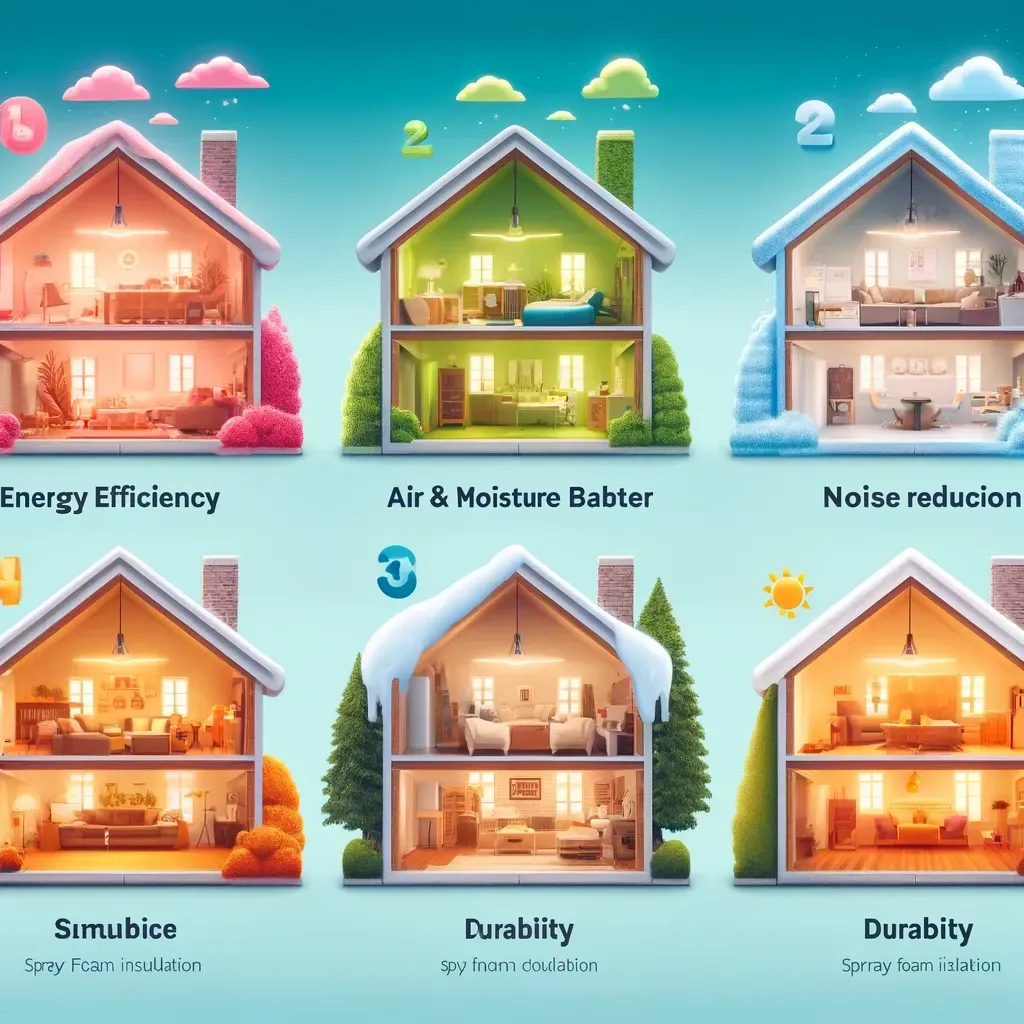


Comprehensive Guide to Home Insulation Options
Introduction
This guide aims to provide property owners with a detailed understanding of various insulation types, emphasizing the benefits of each and illustrating the superior advantages of closed cell spray foam insulation compared to other common insulation materials. Proper insulation is crucial for energy conservation, comfort, and cost savings.
1. Types of Insulation
Fiberglass Insulation
Description: Made from fine glass fibers, available in batts or loose fill.
Benefits:
Cost-effective
Easy installation
Non-flammable
Drawbacks:
Can irritate skin and respiratory system
Less effective in preventing air leakage
Lower R-value per inch compared to other types
Open Cell Spray Foam Insulation
Description: A spray-applied foam that expands and fills gaps, creating an air barrier.
Benefits:
Expands to fill cavities
Good soundproofing qualities
Cost-effective compared to closed cell
Drawbacks:
Lower R-value per inch than closed cell
Can absorb water, which can lead to mold growth
Closed Cell Spray Foam Insulation
Description: A denser spray-applied foam that creates a strong air and moisture barrier.
Benefits:
Highest R-value per inch (around R-6 to R-7)
Acts as a moisture barrier
Adds structural strength to walls
Excellent air barrier, reducing energy costs significantly
Drawbacks:
Higher upfront cost
Requires professional installation
Cellulose Insulation
Description: Made from recycled paper products, treated for fire resistance.
Benefits:
Environmentally friendly
Good for soundproofing
Cost-effective
Drawbacks:
Can settle over time, reducing effectiveness
Can absorb moisture, leading to potential mold issues
Heavier, may require additional support in some applications
Rigid Foam Insulation
Description: Available in boards, made from materials like polystyrene or polyisocyanurate.
Benefits:
High R-value per inch
Provides a continuous insulation layer, reducing thermal bridging
Moisture-resistant
Drawbacks:
More expensive than fiberglass and cellulose
Requires precise installation to ensure effectiveness
2. Comparative Analysis: Closed Cell Spray Foam vs. Other Insulations
R-Value Comparison
Fiberglass: R-2.9 to R-3.8 per inch
Open Cell Spray Foam: R-3.5 to R-3.6 per inch
Closed Cell Spray Foam: R-6 to R-7 per inch
Cellulose: R-3.1 to R-3.8 per inch
Rigid Foam: R-3.8 to R-6.5 per inch
Air and Moisture Barrier Properties
Closed Cell Spray Foam: Excellent air and moisture barrier, prevents mold growth.
Open Cell Spray Foam: Good air barrier, but can absorb moisture.
Fiberglass: Poor air barrier, not effective against moisture.
Cellulose: Moderate air barrier, can absorb moisture.
Rigid Foam: Good air and moisture barrier, especially when seams are sealed.
Structural Benefits
Closed Cell Spray Foam: Adds structural strength, making walls and roofs sturdier.
Other Insulations: Do not add significant structural strength.
Cost Considerations
Fiberglass and Cellulose: Lower upfront cost but may have higher long-term energy costs.
Open Cell Spray Foam: Moderate cost, better long-term energy savings than fiberglass and cellulose.
Closed Cell Spray Foam: Higher upfront cost, significant long-term energy savings, added structural benefits.
3. Conclusion: Why Choose Closed Cell Spray Foam?
Superior Insulation Performance: With the highest R-value per inch, closed cell spray foam provides unmatched thermal resistance, leading to significant energy savings.
Comprehensive Barrier: Acts as an effective air and moisture barrier, reducing the risk of mold and improving indoor air quality.
Enhanced Structural Integrity: Adds strength to building structures, making it an excellent choice for areas prone to severe weather.
Long-Term Cost Savings: While the initial investment is higher, the energy savings, durability, and added protection result in lower overall costs over time.
4. Recommendations for Property Owners
Evaluate Needs: Consider the specific needs of your property, including climate, building structure, and budget.
Professional Consultation: Engage with insulation experts to assess your property and recommend the best insulation solution.
Long-Term Perspective: Think about long-term benefits and savings rather than just initial costs.
For further information or to schedule a consultation, contact our team of insulation experts today. We are here to help you achieve the best energy efficiency and comfort for your property.
